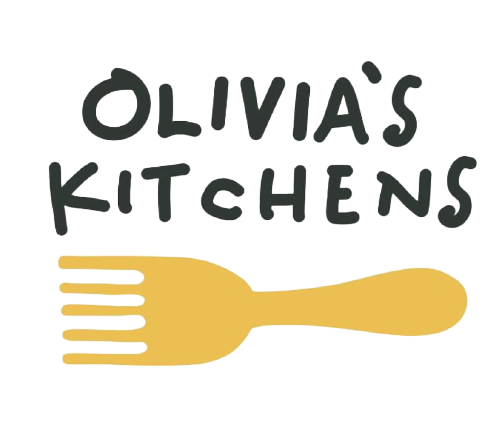Hiring a personal chef is a luxury that many homeowners cherish. The convenience of having delicious meals prepared at home, tailored to personal preferences and dietary needs, is unmatched. However, just like any professional service, effective communication is crucial to ensure that the culinary experience meets your expectations. Providing feedback to your personal chef can be a delicate task, but when done correctly, it can lead to an even more personalized and satisfying dining experience.
Here are some tasteful tips on how to effectively provide feedback to your personal chef experience.
1. Establish Open Lines of Communication
The foundation of any successful relationship, professional or personal, is open communication. From the outset, make it clear to your personal chef that you value their skills and expertise and are open to discussing the meals they prepare. Create an environment where they feel comfortable asking questions about your preferences and dietary restrictions. Likewise, encourage them to share their ideas and suggestions to enhance your dining experience.
2. Be Specific and Constructive
When providing feedback, specificity is key. Rather than simply stating that you didn’t enjoy a particular dish, try to pinpoint what it was that didn’t resonate with you. Was the dish too salty, too spicy, or perhaps lacking in flavor? Providing constructive criticism allows your chef to understand your preferences better and make the necessary adjustments. Remember to frame your feedback in a positive manner, focusing on improvement rather than criticism.
3. Use the Feedback Sandwich Method
The feedback sandwich method is a tried-and-true approach to delivering feedback in a constructive manner. Start with a positive comment to acknowledge something your chef did well, followed by the specific feedback you wish to provide. Finally, conclude with another positive remark to maintain a balanced and encouraging tone. For example, “The presentation of the dessert was exquisite. However, I found the main course to be a bit too oily. Nonetheless, the appetizer was outstanding, and I’m looking forward to trying more of your creative dishes.”
4. Schedule Regular Check-Ins
Setting aside time for regular check-ins with your personal chef can be invaluable in maintaining a harmonious working relationship. These check-ins provide an opportunity to discuss the meals served, any feedback you may have, and adjustments that can be made moving forward. By scheduling these meetings, you demonstrate your commitment to collaboration and continuous improvement, which can inspire your chef to strive for excellence in their culinary creations.
5. Be Open to Trying New Things
While it’s essential to communicate your preferences and dietary needs, it’s also important to be open to trying new dishes and culinary techniques. Your personal chef is a professional who takes pride in their craft and may introduce you to flavors and cuisines you’ve never experienced before. Encourage experimentation and creativity, and provide feedback based on your honest reactions and preferences.
6. Acknowledge and Appreciate Efforts
Recognizing and appreciating the efforts of your personal chef goes a long way in fostering a positive and supportive working relationship. A simple thank you or compliment can boost their morale and motivation to continue delivering exceptional meals. Take the time to acknowledge the time and effort that goes into meal preparation, and express gratitude for the delicious and nourishing dishes they provide.
7. Seek Feedback on Your Feedback
In addition to providing feedback to your personal chef, it’s beneficial to seek their input on your feedback. Ask them how they prefer to receive feedback and if there are any specific areas they would like you to focus on. This two-way communication can help ensure that your feedback is well-received and that your personal chef feels valued and respected.
8. Consider External Factors
When providing feedback, consider external factors that may have influenced your dining experience. For instance, if a dish was not to your liking, was it due to a specific ingredient, cooking technique, or perhaps an unexpected interruption during meal preparation? Understanding these factors can provide valuable context for your feedback and help your personal chef make the necessary adjustments.
9. Provide Feedback Promptly
Timeliness is crucial when providing feedback to your personal chef. If you wait too long to share your thoughts, it may be challenging for your chef to recall the specifics of the meal they prepared. Aim to provide feedback promptly after each meal, while the experience is still fresh in your mind. This will enable your chef to make immediate adjustments and improvements, ensuring that subsequent meals better align with your preferences and expectations.
10. Collaborate on Menu Planning
Collaboration is key to a successful working relationship with your personal chef. Involve them in the menu planning process by discussing your preferences, dietary restrictions, and any special occasions or events that may require specific dishes or themes. Encourage them to share their ideas and recommendations, and work together to create a diverse and exciting menu that caters to your tastes and preferences. This collaborative approach fosters a sense of ownership and pride in the meals prepared, leading to a more personalized and enjoyable dining experience.
11. Utilize Technology for Feedback
In today’s digital age, there are numerous tools and platforms available to facilitate communication and feedback. Consider utilizing technology to provide feedback to your personal chef, such as email, messaging apps, or specialized feedback apps designed for culinary professionals. These platforms provide a convenient and organized way to share your thoughts, track feedback over time, and ensure that nothing gets lost in translation. Embracing technology can streamline the feedback process and enhance the overall communication experience with your personal chef.
12. Be Flexible and Adapt to Changes
Culinary preferences and dietary needs can evolve over time, and it’s important to be flexible and adaptable when working with your personal chef. As your tastes change or new dietary restrictions arise, communicate these changes promptly and openly with your chef. Be receptive to their suggestions and modifications, and work together to adjust the menu accordingly. A flexible and collaborative approach to meal planning ensures that your culinary experience remains enjoyable and satisfying, even as your preferences and dietary needs evolve.
Conclusion
Providing feedback to your personal chef is an essential part of maintaining a harmonious and satisfying culinary experience. By establishing open lines of communication, being specific and constructive in your feedback, using the feedback sandwich method, scheduling regular check-ins, being open to trying new things, acknowledging and appreciating efforts, seeking feedback on your feedback, and considering external factors, you can effectively communicate your preferences and expectations while fostering a supportive and collaborative relationship with your personal chef. Remember, effective feedback is a two-way street that requires mutual respect, understanding, and a shared commitment to excellence in the pursuit of culinary perfection.






